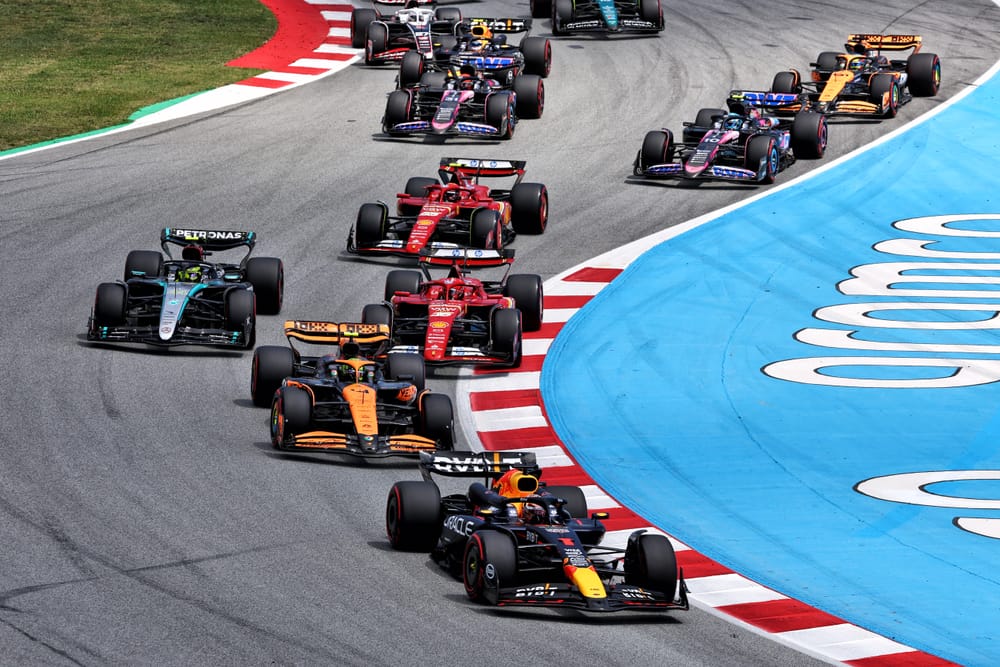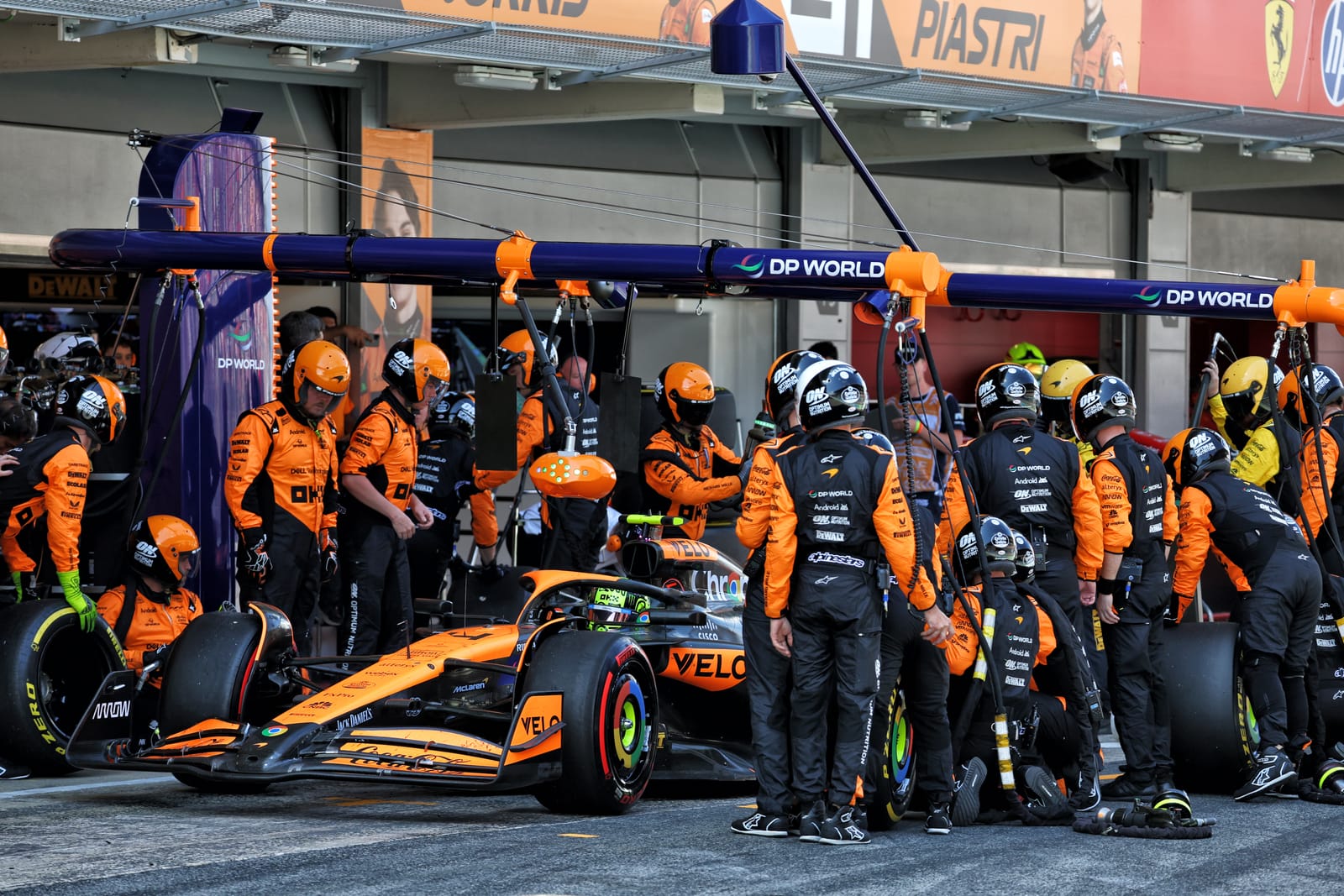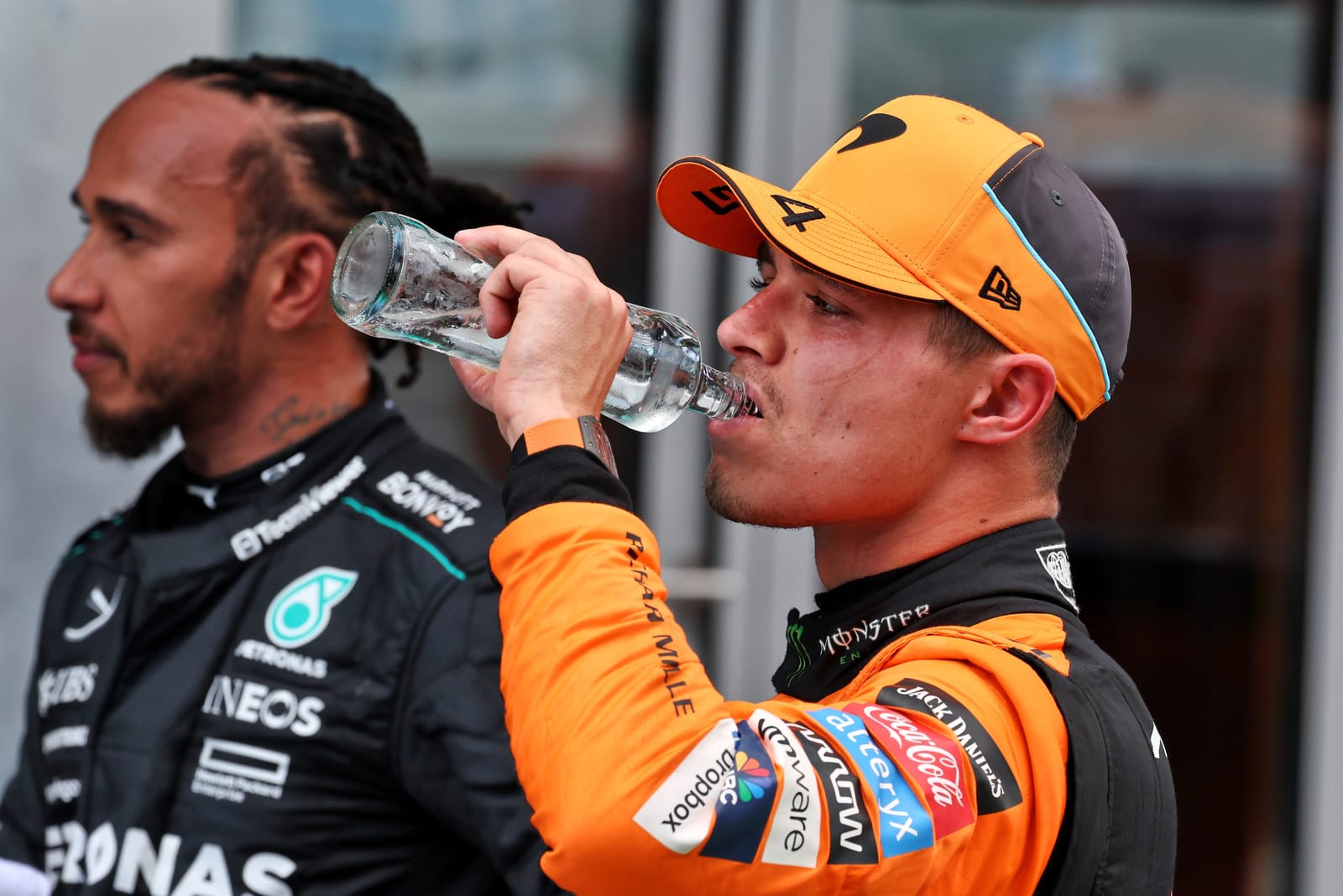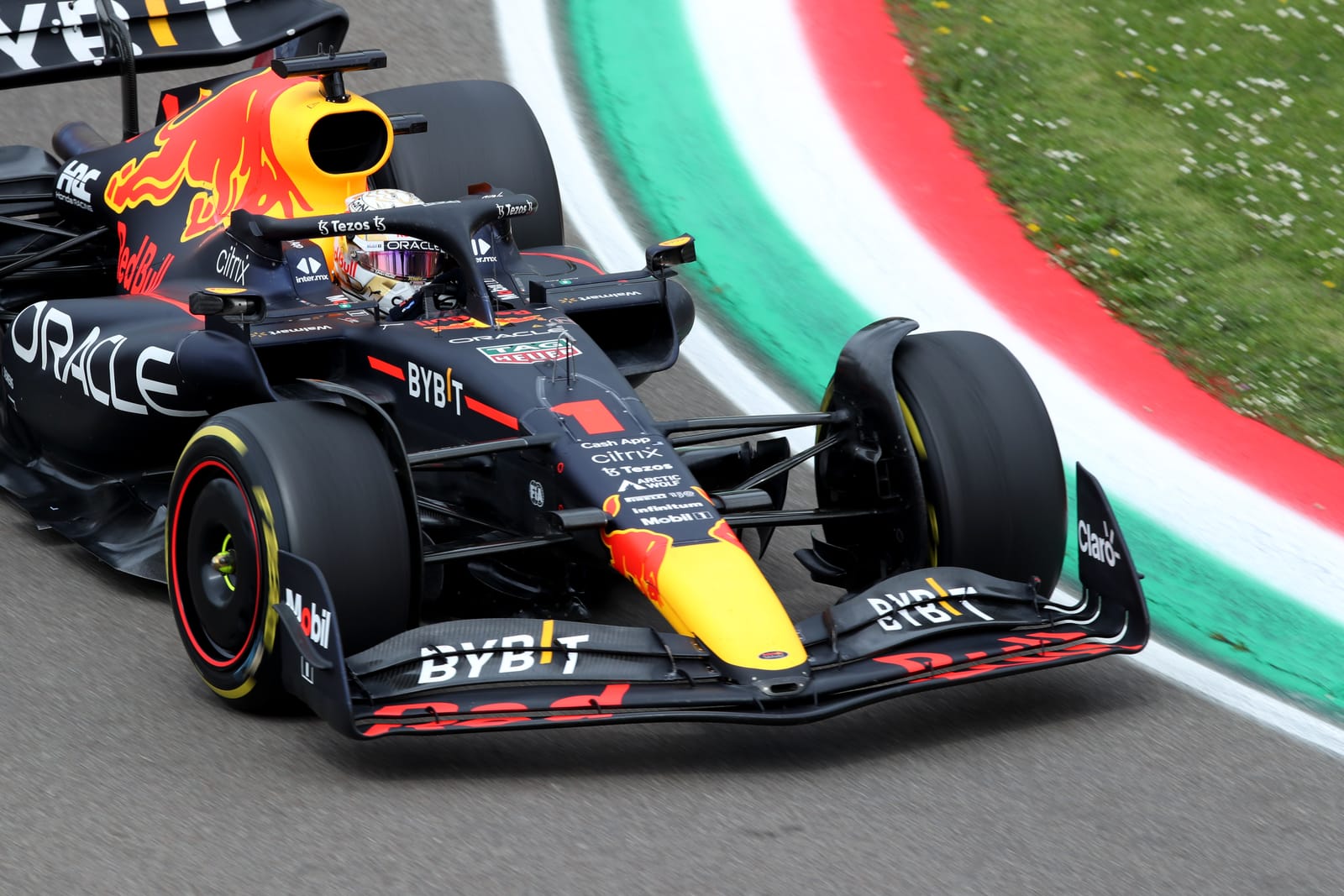Up Next

“Not could have won it,” said Lando Norris after finishing the 2024 Spanish Grand Prix a couple of seconds behind Max Verstappen.
“Should have won it. The car was incredible today, for sure the quickest. It was decided by a poor start.”
That start allowed Verstappen’s Red Bull inside Norris’ McLaren and despite being eased towards the grass by his friend, his rear tyre kicking up the dust, he was through.
But for one small complication: their dicing and the double tow they’d provided had allowed George Russell to swoop around them both, his Mercedes leading from the start for a second consecutive race.
Verstappen’s decisive retaliatory pass on the Mercedes going into lap three – and Norris’ inability to do the same - just further cemented Verstappen’s victory.
And this one really was a Verstappen win in that he made the difference in what was probably not the fastest car on the day. The clinically good start, the commitment to keep coming despite Norris’ robust defence, the aggressive pass on Russell: they are what won him the race.
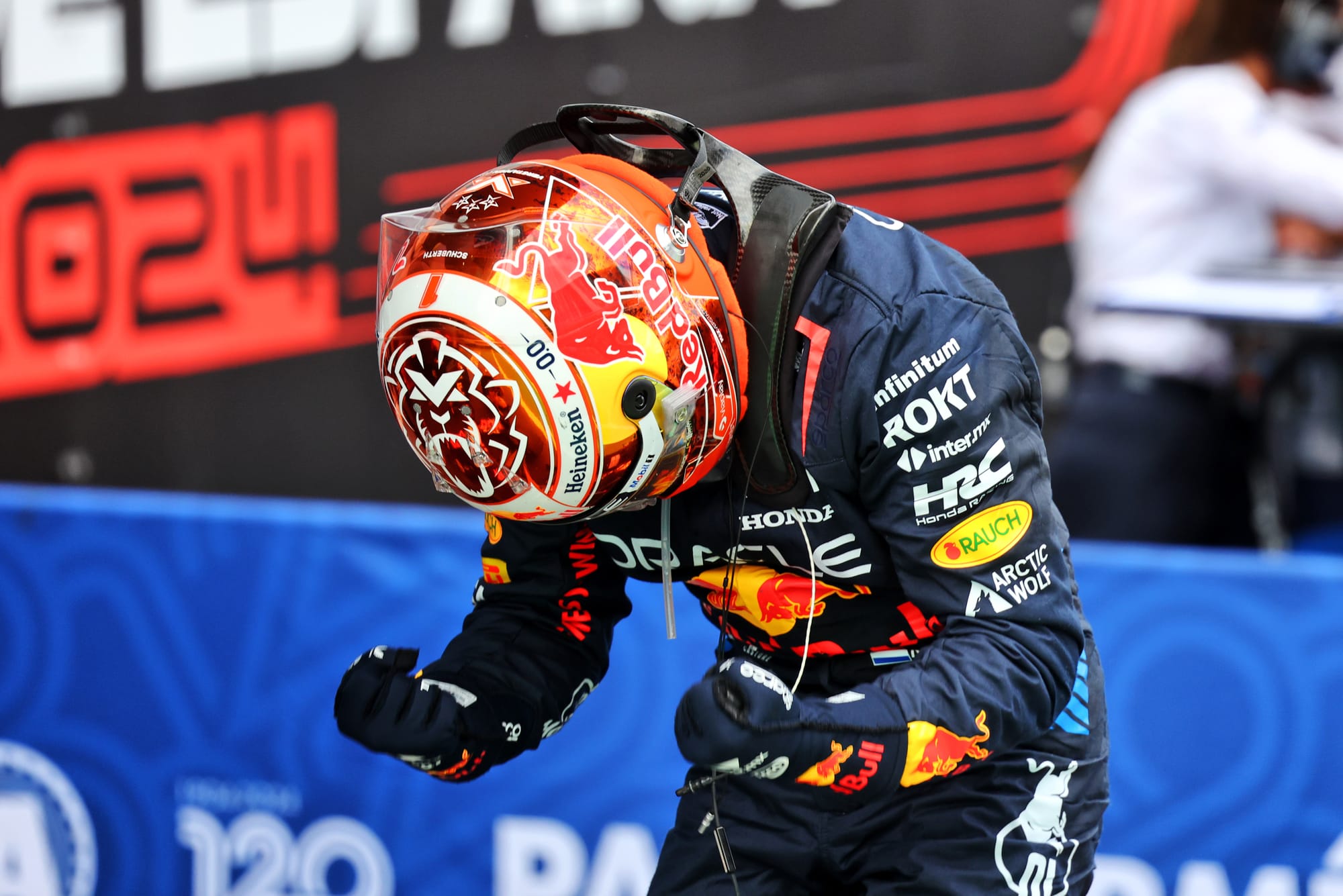
The Red Bull was good enough to then allow him to defend the position he’d put it in. But no more than that.
So we have our answer to the pre-weekend question posed by the Circuit de Catalunya's classically aerodynamically demanding layout: whether Red Bull’s advantage would resume here. No. It still has more ultimate downforce but the McLaren is genuinely at least as good.
Around here it had a better resolution to the conflict between low-speed understeer and high-speed instability. It was a much easier car to put in the sweet spot than the Red Bull, which forced the race team into another rethink on wing levels on the eve of qualifying (just as at Imola, but in the other direction).
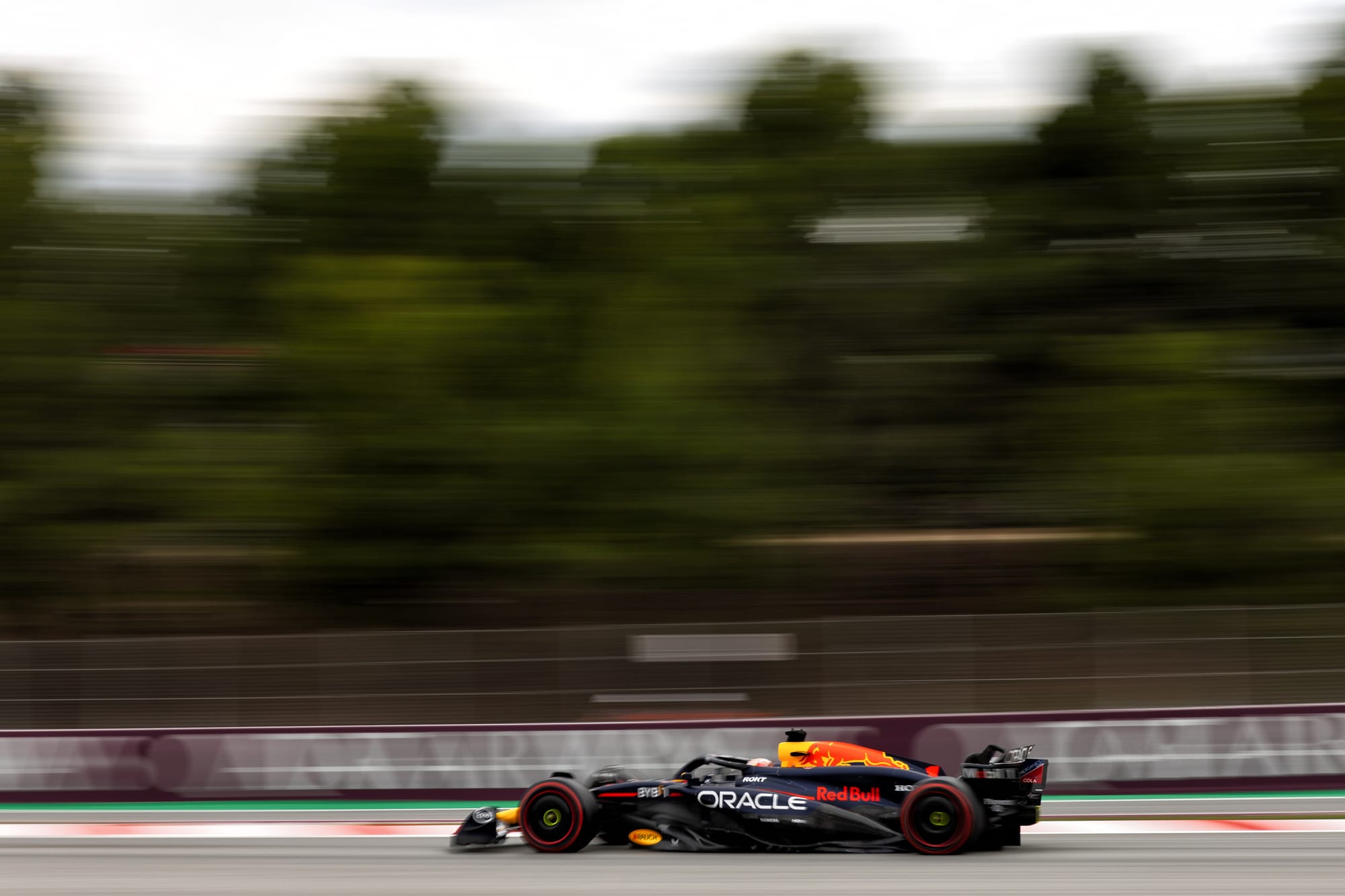
The Red Bull remains supreme in the high-speed corners, and over a single lap on new tyres it may even have been potentially slightly faster, but the McLaren looks the more flexible machine, the one more likely to be a contender on every type of track.
“I think we struggle a bit for optimum pace,” said Verstappen, “and we are lacking good tyre deg at the end of the stints. Late in the stints Lando could push a bit harder through certain corners.”
“In my opinion,” said Norris, “they had a quicker car yesterday. But we had a quicker car today.”
By the time each had put around 15 laps on their tyres, the McLaren appeared as much as 0.8s faster. That’s more than a different emphasis between drivers – of Norris going easier earlier to reap the reward later. That’s a car or set-up trait.
The Red Bull had stronger initial new tyre pace but only slightly. So if Norris had won the start and been able to have kept the initially faster car behind, he’d have been faster by the time the first pitstop window was opening and likely to have got himself out of undercut range and controlled the race.
But of course it didn’t happen that way and furthermore that strong initial Red Bull pace allowed Verstappen to put that move on Russell. That trait is what his engineer Gianpiero Lambiase was referring to mid-way through lap two when he radioed, “This might be our best opportunity now, Max. Think wisely.”
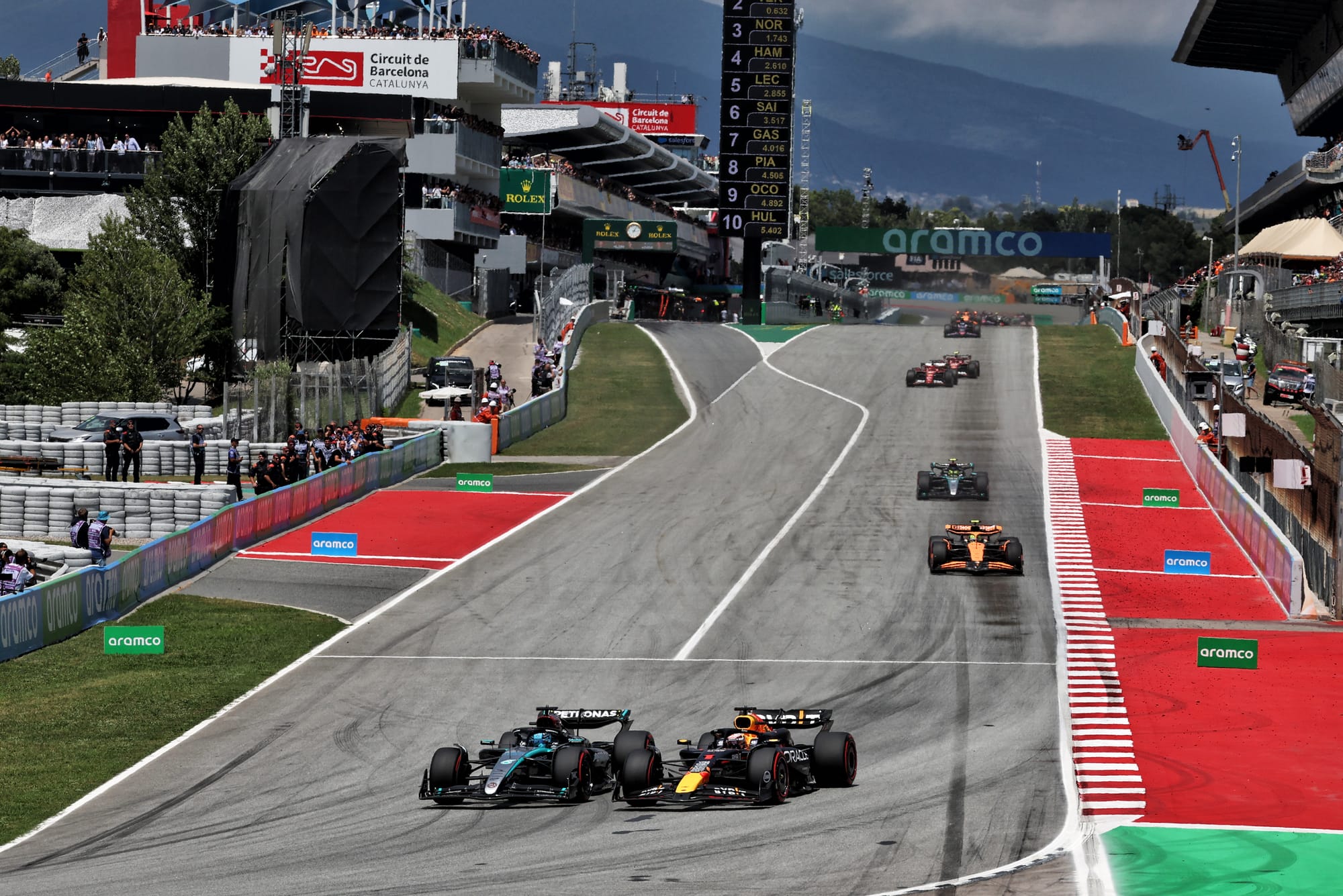
In other words, with DRS now enabled, this is when our tyre advantage is at its greatest, load yourself up with battery charge and use that massive grip through the final turn (the Red Bull significantly faster through there than any other car) to slingshot out and make the pass. Which of course he did to perfection.
Rusell was expecting it and didn’t fight it. He was more concerned about getting to his target lap without the tyres overheating and was being guided in that by his engineer.
Norris at this time wasn’t even in Russell’s DRS range and wasn’t running anything like as aggressively as Verstappen had been.
“Once I was in P3, I just had to bide my time,” Norris reasoned. He knew the fight was with Max, not the Mercedes, and reasoned the best way to minimise the damage his track position loss had given him was to play to his car’s end-of-stint advantage, seen to such great effect in Miami and at Imola. Pushing on and trying to put a move on Russell like Verstappen had wasn’t going to allow Norris to do that. They were each reacting to their differing situations in the perfect way for their respective car traits.
Racing on a high-degradation track like this, pace is determined solely by tyre management. Not by driver skills. The car with the best combination downforce and balance will be the one with the fastest feasible lap time within a given tyre temperature target. But that will be whole seconds away from how fast the drivers could drive them.
What we were watching, as we’ve done so many times before, was a competition trading off tyre usage with track position. You could afford to eat into your tyre life a little if it made an overtake feasible. But it was a tiny window, one which Verstappen had exploited when it was briefly open.
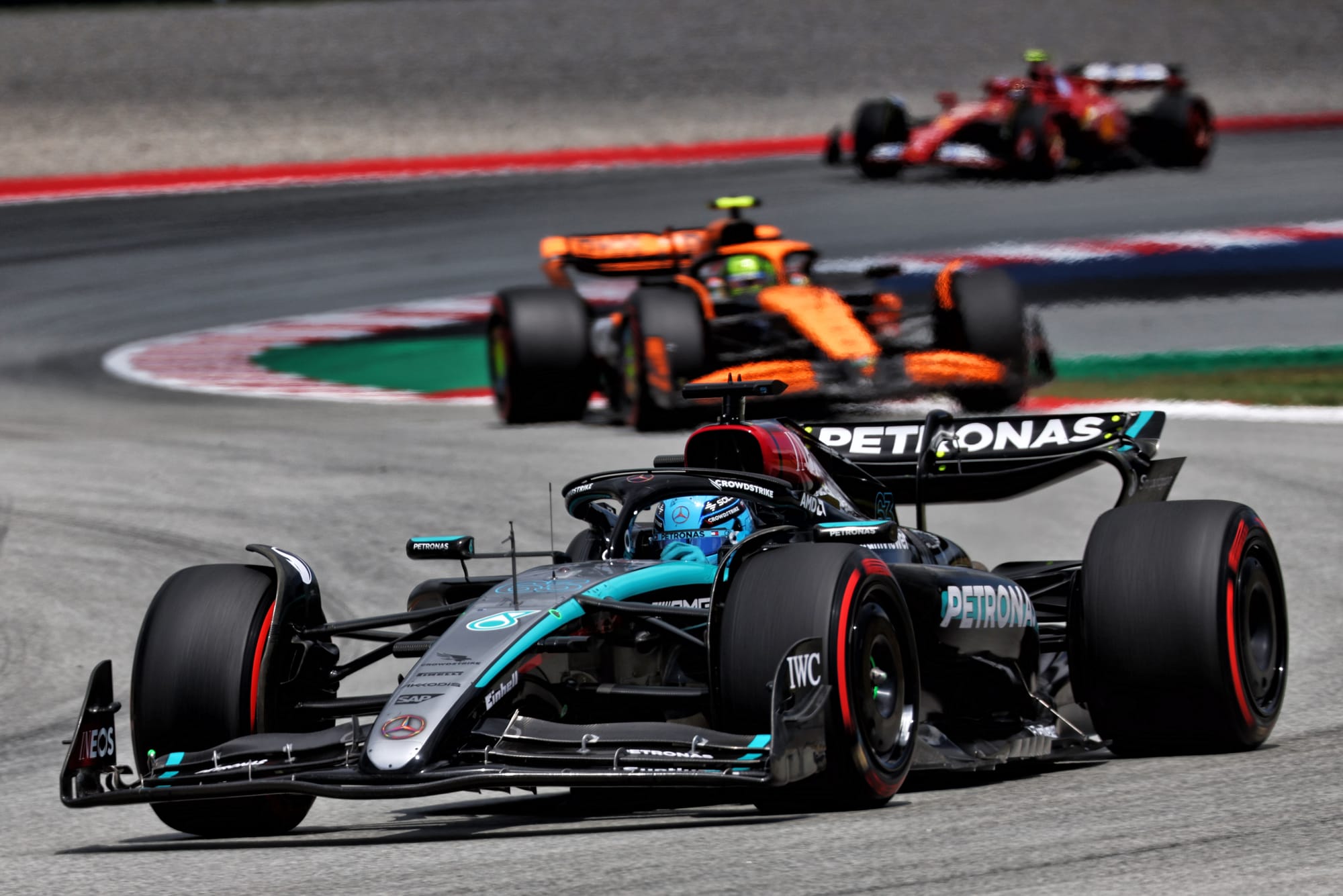
The Mercedes is much-improved since its new front wing arrived, but Barcelona wasn’t quite so kind to it as Montreal had been. Realistically, it was a couple of tenths off the tyre-dictated Red Bull/McLaren pace here.
So with Russell the cork in the bottle and Norris having to bide his time behind it, Verstappen was able to open out a lead of almost 4s in the first 14 laps and therefore be under no undercut threat. Doing so at a relatively gentle pace which allowed him to pay back the tyre deficit his initial two-lap charge will have cost.
That was the mechanism behind Verstappen’s faultless win. All that remained in this two-stop race once the opening couple of laps had played out was how Norris and McLaren got themselves up to second, in the distant hope of then being able to use that great late-stint pace to make Verstappen/Red Bull crack.
Mercedes began the leading stops, bringing Russell in on the 15th lap, with Ferrari pulling Carlos Sainz out of his fifth place slot on the same lap. The reasoning at Mercedes was that there was no point trying to race a faster car (Norris) by going longer. You’d lose the position for certain.
At Ferrari, it was more to do with separating Sainz from his furious team-mate Charles Leclerc, who’d been giving the rubber an easy time, as instructed, through the final turn on the third lap as Sainz went through there much more aggressively and used DRS to put a very marginal pass on Leclerc. Ferrari would leave Leclerc out long.
With Russell out the way, Norris stepped up the pace by over 1s! That was still slower than the new-tyred cars would be doing (such was the high degradation rate) but it was 0.5s faster than Verstappen. A couple more laps of that and Verstappen would have been in undercut range of the McLaren. Before that could happen Red Bull brought him in – at the end of lap 17.
Lewis Hamilton – who had run behind Norris for the first stint at the pace dictated by Russell – had come in the lap before. He, like Russell and Sainz, would potentially undercut Norris if McLaren didn’t bring its man in. Norris was asked if he wanted to cover them. No, he replied, let’s do what’s best for trying to beat Max.
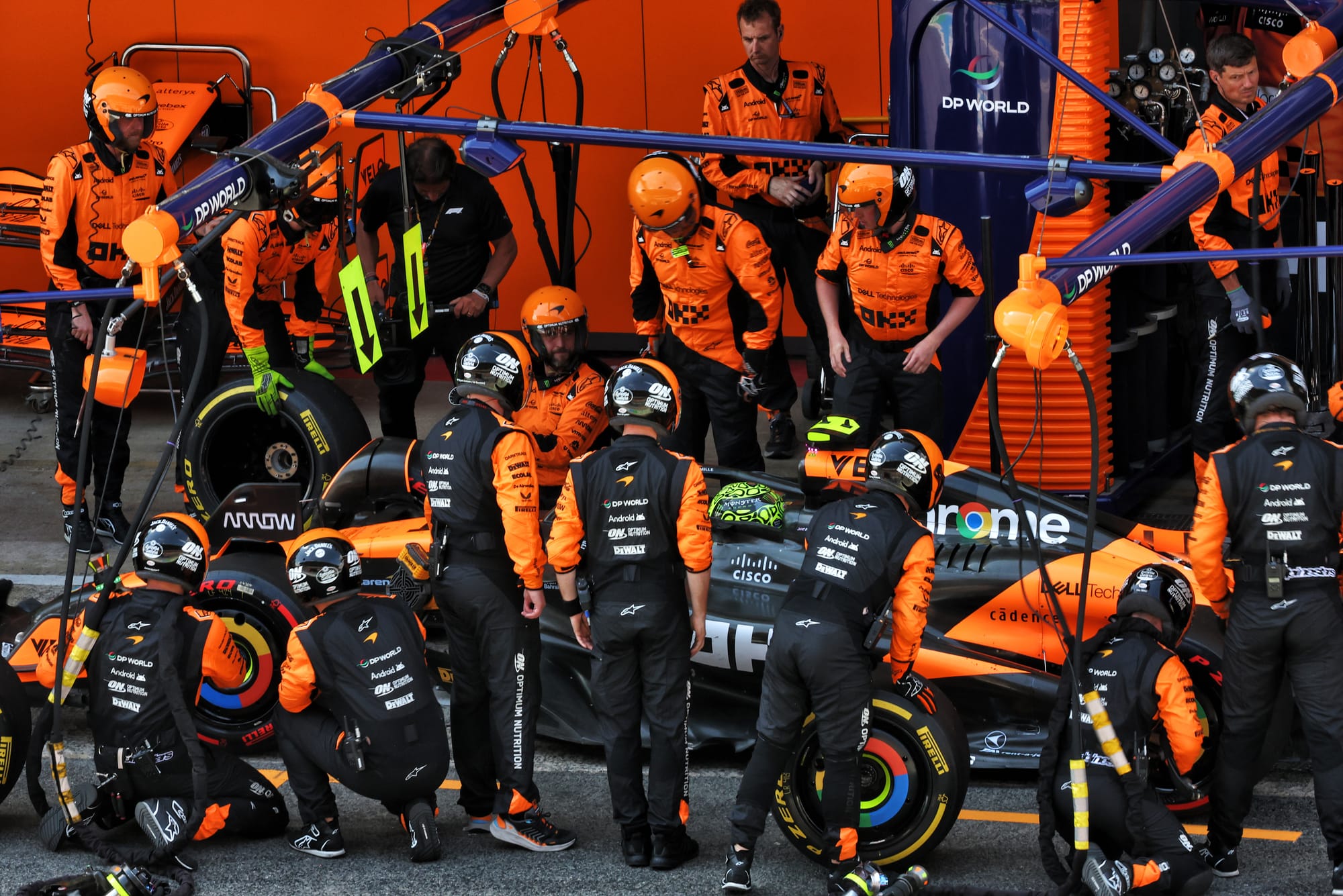
Staying out until lap 23 gave him a six-lap tyre advantage over Verstappen after they’d each changed their starting softs for a set of mediums, but it meant finding his way by Sainz, Hamilton and Russell, which took a bit of time and met with some fierce resistance from Russell.
It was lap 36 by the time Norris was finally up to second place. Verstappen had an 8.8s lead and although Norris was lapping way faster, that was a perfectly playable track position cushion for Red Bull. It let the McLaren get to within around 4s before pulling Verstappen in for his final stop on lap 44, where he’d be fitted with a set of softs.
Then it played out all over again, with Norris stopping three laps later and emerging still in second now 8s behind again (because of the three laps on old tyres vs Verstappen’s new). He’d get that down to a couple of seconds by the end but Red Bull and Verstappen had it all under control.
That delay behind Russell in both stint one and two was ultimately fatal to Norris’ victory prospects.
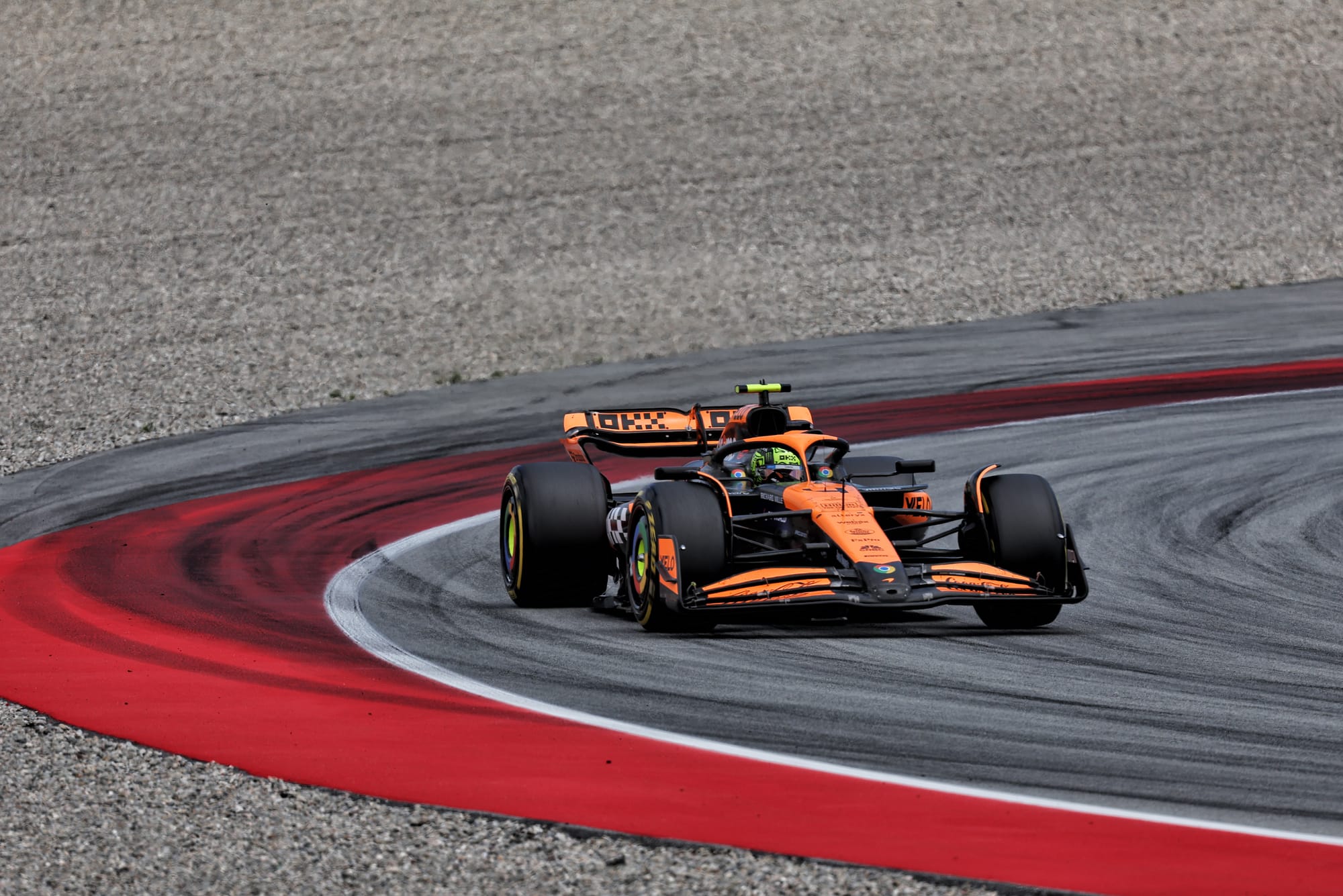
“We’d have done the same strategy even if we’d been leading,” said McLaren boss Andrea Stella. “So I was thinking the later stop would bring us back into the race [with Verstappen]. We just lost too much time behind Russell, otherwise their race would have come to us.”
But that delay came courtesy of what had happened in the opening few seconds.
“If George hadn’t been to my outside I’m pretty sure I could have kept Max behind by going around the outside at Turn 1,” Norris recalled. But he was. So Russell helped Verstappen seal another victory.
Russell’s dice with Norris had used up a lot of the Mercedes’ valuable tyre life too. They’d inflicted damage on each other with that thrilling wheel-to-wheel dice which lasted from Turn 2 to Turn 7. With his tyres fading, Russell was holding up Hamilton – and the Ferraris were looming as the second stop window opened. It was imperative that Russell be called in. That was lap 36. Too early to switch to softs. So hards it had to be. They were slow. Sainz – who came in on the same lap as Russell again – was also fitted with them.
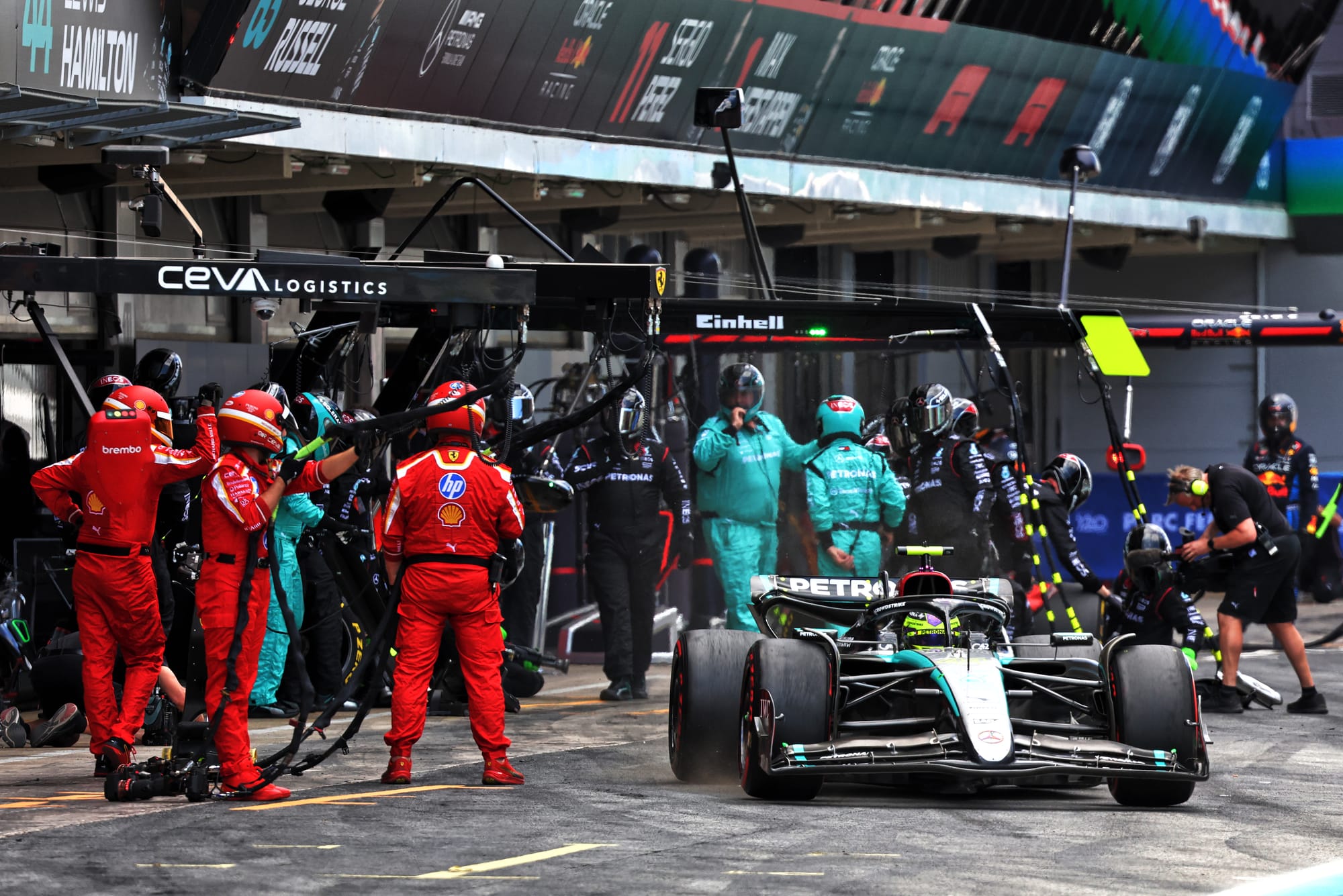
Hamilton and Leclerc were able to make their stops late enough to get onto softs and with a set of these Hamilton was able to pass by Russell for third. He’d earlier incurred Sainz’s displeasure with a marginal pass into Turn 1, but the stewards, having looked at it, dismissed it.
In the late stages Sainz pulled aside for Leclerc to give chase of Russell, with Charles later pointing out that he’d probably have passed Russell at the end had he not suffered the delay caused by Sainz’s pass of him on lap three.
Oscar Piastri was at a loss to explain why the McLaren just was not working for him and he trailed home a distant seventh, just ahead of the three-stopping Red Bull of Sergio Perez who passed Pierre Gasly’s Alpine on the last lap.
Disappointed though Gasly was about that, this weekend was a much-needed morale boost for the Alpine team, with by far its strongest performance of the season, with both Gasly and Esteban Ocon in the points, having each made Q3.
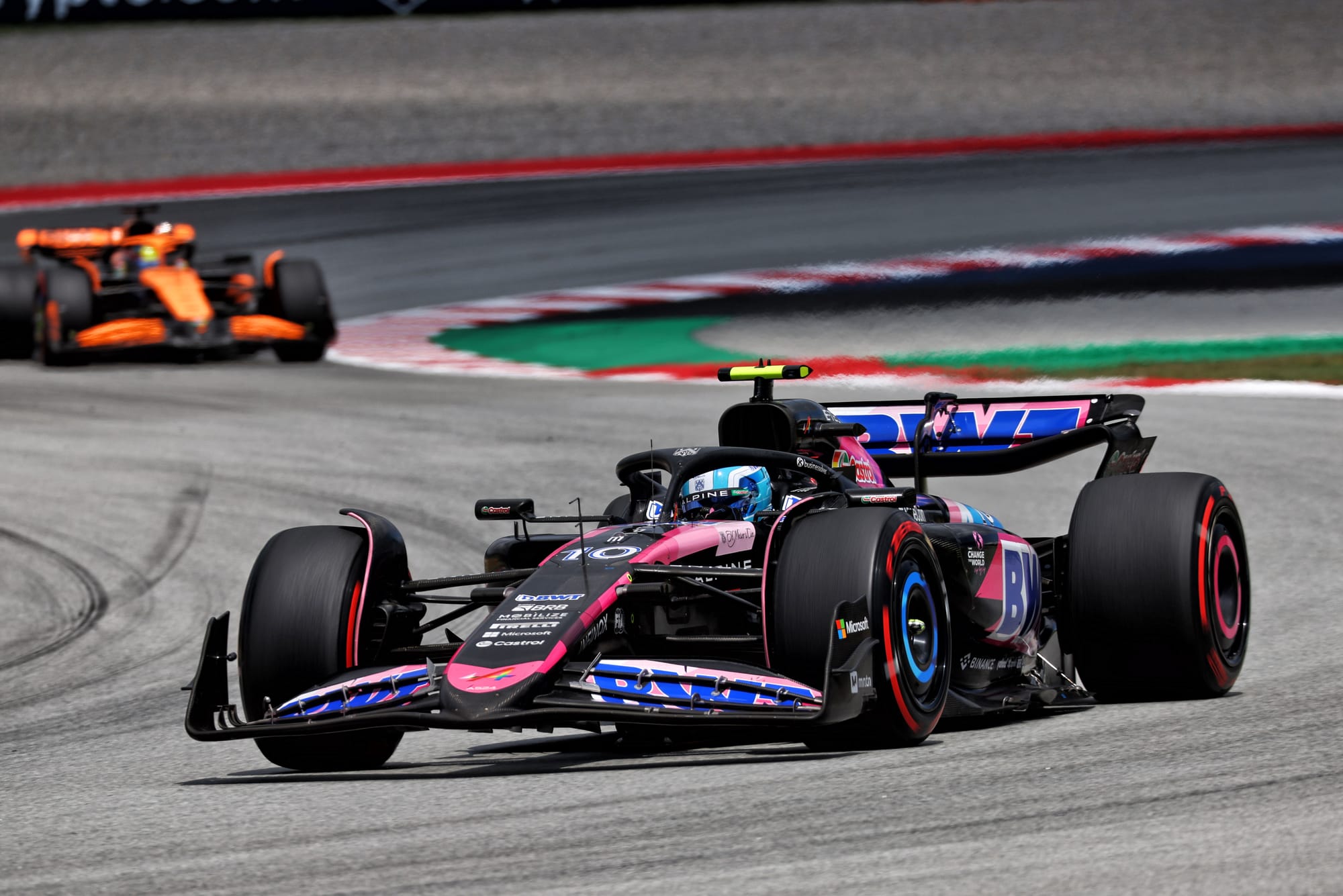
So another Verstappen victory, but not a comfortable one.
“You need to have a good, strong car to be able to keep those kind of performances up,” he mused.
“And I think at the moment we just need to try and find that little bit more to comfortably win. Because I think if you look at our last few wins, it's been more about just being there at the right moment, at the right time, making the right calls and being quite strong as a team.”

